As Linux is an open-source system that is also free for everyone, different distributions are available targeting different sets of users. In Linux-based machines, using the latest version is always recommended to run everything smoothly and experience new features missing in the older versions.
So, if you have no idea of doing this, then we will be discussing different ways that you can use to check the Linux version in this article. There are different ways to check the Linux version, so the content of this post is as follows:
Let’s discuss both of these methods in detail in the next section.
How to Check Linux Version Using Terminal?
There is a variety of commands that you can run on a terminal to check the Linux version. A detailed description of the possible commands that can be used to check the Linux version is provided in this section.
Method 1: Using the uname Command
This command will tell you what version of Linux Kernel you are running by typing:
$ uname -r

Method 2: Using the hostnamectl Command
There is one more command that you can use to will give you the information of both Linux as well as the kernel version by typing:
$ hostnamectl

Method 3: Using the lsb_release Command
The Linux standard base or lsb command is used to get the relevant information about the distribution you are using. If you want all the related regarding your distribution, then you can type the command mentioned below:
$ lsb_release -a
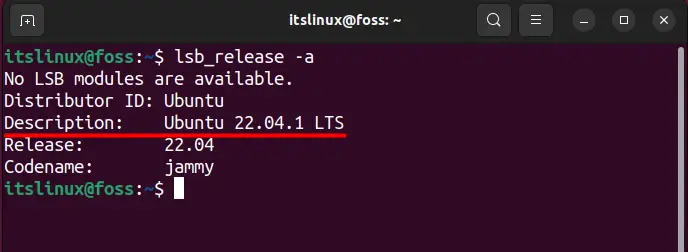
You can run the following command to know more about the flags you can use with the lsb_release command by typing.
$ lsb_release --help
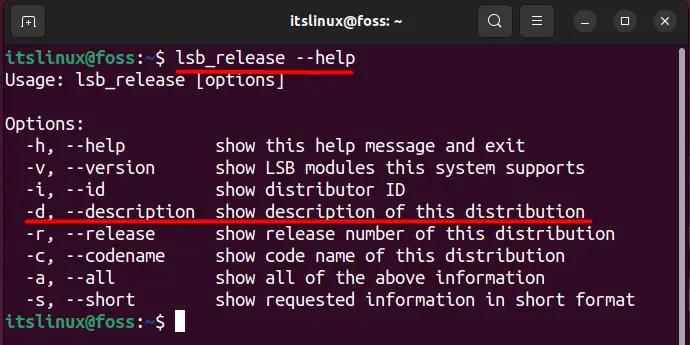
So if you only want to see the distribution details along with the version, then you need to use the -d flag as shown below:
$ lsb_release -d

You can see that we are using the Ubuntu distribution, and its version is “22.04.1” which is the latest while writing this article.
Method 4: By Accessing /etc/*release File
If you have an outdated version, then there is a possibility that some commands might not work for you. So, in such case, this command will work every version by typing:
$ cat /etc/*release
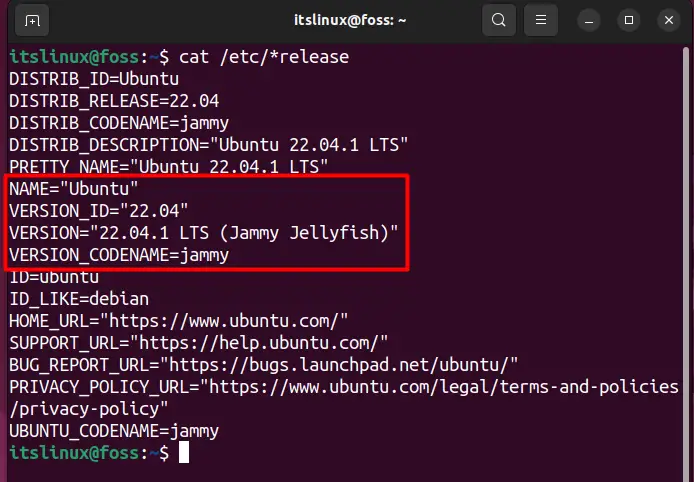
Method 5: By Accessing /etc/os-release File
This is another variation of checking the Linux version that you can do by accessing the /etc/os-release file by typing the following command:
$ cat /etc/os-release
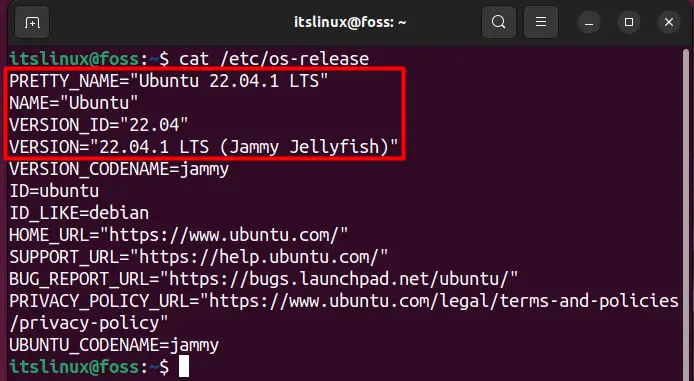
Method 6: By Accessing /etc/issue File
You can also check the Linux version by accessing a different file within the same directory as shown below:
$ cat /etc/issue

How to Check Linux Version Using Graphical User Interface (GUI)?
You can also use the Linux version via GUI as well but that depends on the distribution you are using. A quick tip that we can give you is that this option is mostly available in the system settings. For example, if you are using Ubuntu, then you need to find the system settings and then select the ‘About’ tab as shown:
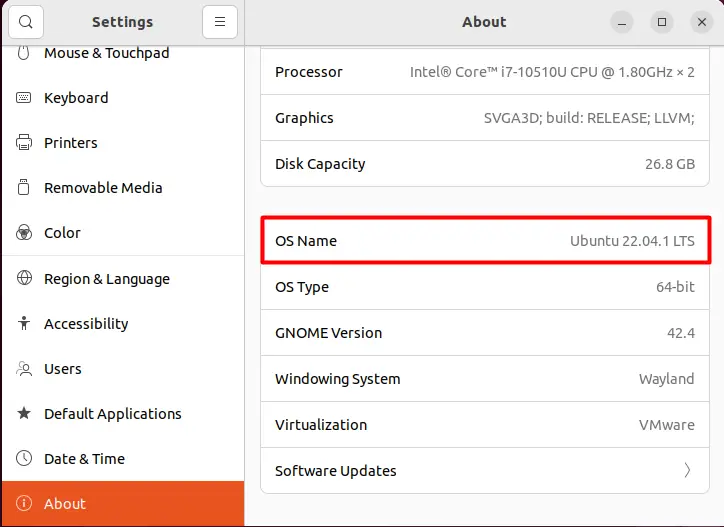
Similarly, if you are using Linuxmint, you need to select the system settings and then find the ‘system info’ inside the hardware option.
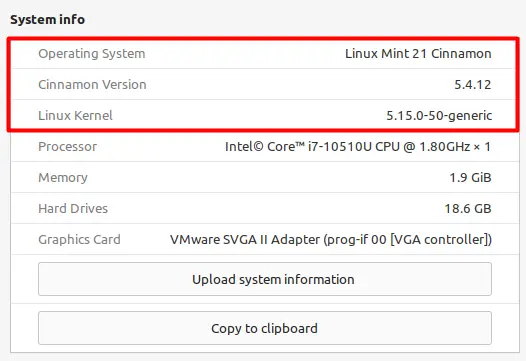
Note: For more details on the Linux Kernel version, read out this article. “Check Linux Kernel Version”.
That’s all from this guide!
Conclusion
To check the Linux version, use the commands “uname”, “hostnamectl”, or “lsb_release”. The user can also check the Linux version by accessing the files “ /etc/*release”, “/etc/os-release”, or “/etc/issue”. Having the latest version of Linux distribution is highly recommended as it contains all the new updates and features that lacks in the older versions. This post has listed down the possible methods to check the Linux version using the terminal and the GUI.
